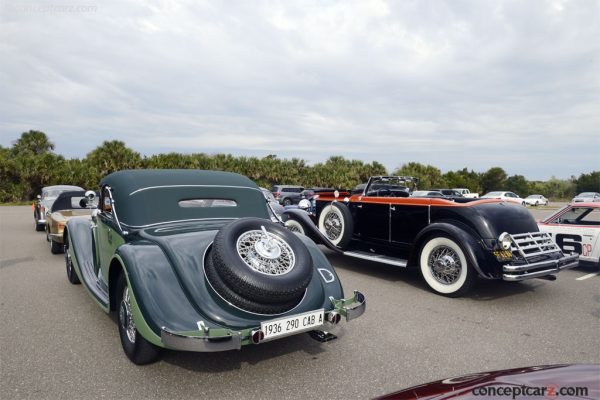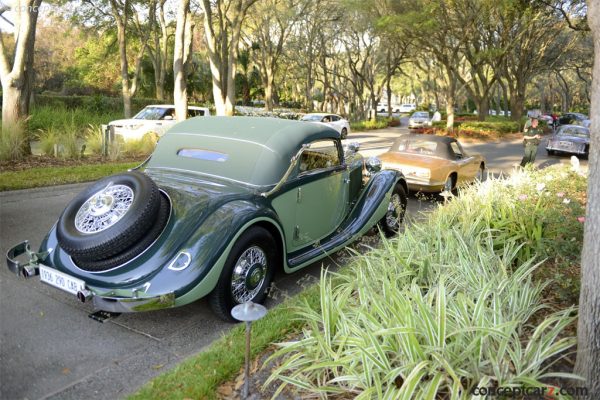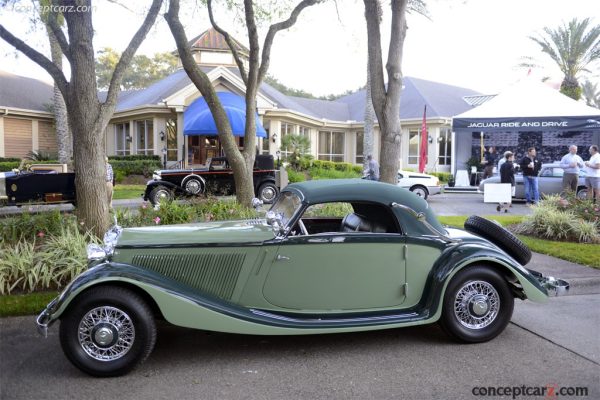The effects that World War II had on pre-war manufactured Mercedes-Benz automobiles would not be realized for decades. Not only were the majority of these W18 and 290 cars destroyed or lost during the war, but the Mannheim factory was completely incinerated by the Allies at the close of the war. All records and documentation were destroyed in the inferno.
Mercedes-Benz technical director Hans Nibel, the man responsible for the marque’s successful W25 race car, was also responsible for the 290 model, which became one of the Stuttgart factory’s most influential designs. A total of 3,929 Mercedes-Benz 290 W18s were produced from 1933 to 1937 in various forms. The 290 was first offered with a variety of factory body styles, including a 6-seat touring car and a 4-door saloon. In 1936 these styles were joined by a fourth, more sporting car, the Cabriolet A, which was 7.5 inches lower than the other standard-bodied cars.
This Sindelfingen-built Cabriolet is one of the rarest of the 290 models. It is built on the shorter 114-inch chassis and includes the standard 60 horsepower, 2.9-liter, 6-cylinder side-valve engine. It has a body by Sindelfinger Karoserie and was manufactured in 1936. It was not sold to its first owner until 1948 indicating it was likely hidden away during the rise of the Third Reich and World War II.
There is no argument that the W18 was a ‘mid-priced point’ car. Mercedes-Benz manufactured the high end 380, 500 and 540K luxury models. However, wealthy buyers preferred the 290 model as it was not ostentatious.
The current owners are the 4th owners of this vehicle that is powered by a 2.867 liter straight six cylinder engine developing 68 horsepower coupled to a four-speed transmission.


























